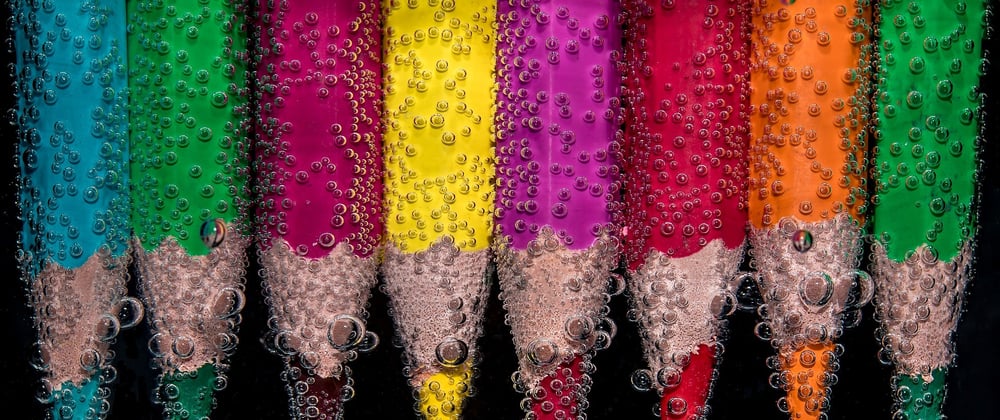Step-by-step guide to convert a very simple Jetpack Compose Android app to use material 3 design
This article shows the steps to convert this Jetpack Compose App Template to use Material 3 design - the latest version of Google’s open-source design system.
1. Update Compose Material Dependency
Replace
implementation("androidx.compose.material:material:1.2.1")
with
implementation("androidx.compose.material3:material3:1.1.0-alpha01")
2. Fix Compilation Issues
After you sync the Gradle file, build the project. Then, you get some compilation issues. Replace import androidx.compose.material.* with import androidx.compose.material3.*
For example, replace
import androidx.compose.material.Text
import androidx.compose.material.Shapes
import androidx.compose.material.darkColors
import androidx.compose.material.lightColors
import androidx.compose.material.Typography
with
import androidx.compose.material3.Text
import androidx.compose.material3.Shapes
import androidx.compose.material3.darkColorScheme
import androidx.compose.material3.lightColorScheme
import androidx.compose.material3.Typography
Some of the parameters are no longer valid in Material 3. For example:
No equivalent
primaryVariantparameter indarkColorScheme()body1parameter is changed tobodyLargeinTypograpphy()
3. Use Custom Material Theme Builder
To configure the color scheme, you can use this custom material theme builder.
At the left panel, select the primary core color you wish (the secondary, tertiary and neutral colors are automatically adjusted)
In the top left corner, click Export -> Jetpack Compose(Theme.kt)
material-theme.zip is downloaded
Go to ui\theme, copy the Colors.kt and Theme.kt do your app
Example of default Colors.kt:
val md_theme_light_primary = Color(0xFF6750A4)
val md_theme_light_onPrimary = Color(0xFFFFFFFF)
val md_theme_light_primaryContainer = Color(0xFFEADDFF)
val md_theme_light_onPrimaryContainer = Color(0xFF21005D)
val md_theme_light_secondary = Color(0xFF625B71)
val md_theme_light_onSecondary = Color(0xFFFFFFFF)
val md_theme_light_secondaryContainer = Color(0xFFE8DEF8)
val md_theme_light_onSecondaryContainer = Color(0xFF1D192B)
val md_theme_light_tertiary = Color(0xFF7D5260)
val md_theme_light_onTertiary = Color(0xFFFFFFFF)
val md_theme_light_tertiaryContainer = Color(0xFFFFD8E4)
val md_theme_light_onTertiaryContainer = Color(0xFF31111D)
val md_theme_light_error = Color(0xFFB3261E)
val md_theme_light_onError = Color(0xFFFFFFFF)
val md_theme_light_errorContainer = Color(0xFFF9DEDC)
val md_theme_light_onErrorContainer = Color(0xFF410E0B)
val md_theme_light_outline = Color(0xFF79747E)
val md_theme_light_background = Color(0xFFFFFBFE)
val md_theme_light_onBackground = Color(0xFF1C1B1F)
val md_theme_light_surface = Color(0xFFFFFBFE)
val md_theme_light_onSurface = Color(0xFF1C1B1F)
val md_theme_light_surfaceVariant = Color(0xFFE7E0EC)
val md_theme_light_onSurfaceVariant = Color(0xFF49454F)
val md_theme_light_inverseSurface = Color(0xFF313033)
val md_theme_light_inverseOnSurface = Color(0xFFF4EFF4)
val md_theme_light_inversePrimary = Color(0xFFD0BCFF)
val md_theme_light_shadow = Color(0xFF000000)
val md_theme_light_surfaceTint = Color(0xFF6750A4)
val md_theme_light_outlineVariant = Color(0xFFCAC4D0)
val md_theme_light_scrim = Color(0xFF000000)
val md_theme_dark_primary = Color(0xFFD0BCFF)
val md_theme_dark_onPrimary = Color(0xFF381E72)
val md_theme_dark_primaryContainer = Color(0xFF4F378B)
val md_theme_dark_onPrimaryContainer = Color(0xFFEADDFF)
val md_theme_dark_secondary = Color(0xFFCCC2DC)
val md_theme_dark_onSecondary = Color(0xFF332D41)
val md_theme_dark_secondaryContainer = Color(0xFF4A4458)
val md_theme_dark_onSecondaryContainer = Color(0xFFE8DEF8)
val md_theme_dark_tertiary = Color(0xFFEFB8C8)
val md_theme_dark_onTertiary = Color(0xFF492532)
val md_theme_dark_tertiaryContainer = Color(0xFF633B48)
val md_theme_dark_onTertiaryContainer = Color(0xFFFFD8E4)
val md_theme_dark_error = Color(0xFFF2B8B5)
val md_theme_dark_onError = Color(0xFF601410)
val md_theme_dark_errorContainer = Color(0xFF8C1D18)
val md_theme_dark_onErrorContainer = Color(0xFFF9DEDC)
val md_theme_dark_outline = Color(0xFF938F99)
val md_theme_dark_background = Color(0xFF1C1B1F)
val md_theme_dark_onBackground = Color(0xFFE6E1E5)
val md_theme_dark_surface = Color(0xFF1C1B1F)
val md_theme_dark_onSurface = Color(0xFFE6E1E5)
val md_theme_dark_surfaceVariant = Color(0xFF49454F)
val md_theme_dark_onSurfaceVariant = Color(0xFFCAC4D0)
val md_theme_dark_inverseSurface = Color(0xFFE6E1E5)
val md_theme_dark_inverseOnSurface = Color(0xFF313033)
val md_theme_dark_inversePrimary = Color(0xFF6750A4)
val md_theme_dark_shadow = Color(0xFF000000)
val md_theme_dark_surfaceTint = Color(0xFFD0BCFF)
val md_theme_dark_outlineVariant = Color(0xFF49454F)
val md_theme_dark_scrim = Color(0xFF000000)
val seed = Color(0xFF6750A4)
Example of light and dark color schemes in Theme.kt:
private val LightColorScheme = lightColorScheme(
primary = md_theme_light_primary,
onPrimary = md_theme_light_onPrimary,
primaryContainer = md_theme_light_primaryContainer,
onPrimaryContainer = md_theme_light_onPrimaryContainer,
secondary = md_theme_light_secondary,
onSecondary = md_theme_light_onSecondary,
secondaryContainer = md_theme_light_secondaryContainer,
onSecondaryContainer = md_theme_light_onSecondaryContainer,
tertiary = md_theme_light_tertiary,
onTertiary = md_theme_light_onTertiary,
tertiaryContainer = md_theme_light_tertiaryContainer,
onTertiaryContainer = md_theme_light_onTertiaryContainer,
error = md_theme_light_error,
onError = md_theme_light_onError,
errorContainer = md_theme_light_errorContainer,
onErrorContainer = md_theme_light_onErrorContainer,
outline = md_theme_light_outline,
background = md_theme_light_background,
onBackground = md_theme_light_onBackground,
surface = md_theme_light_surface,
onSurface = md_theme_light_onSurface,
surfaceVariant = md_theme_light_surfaceVariant,
onSurfaceVariant = md_theme_light_onSurfaceVariant,
inverseSurface = md_theme_light_inverseSurface,
inverseOnSurface = md_theme_light_inverseOnSurface,
inversePrimary = md_theme_light_inversePrimary,
surfaceTint = md_theme_light_surfaceTint,
outlineVariant = md_theme_light_outlineVariant,
scrim = md_theme_light_scrim,
)
private val DarkColorScheme = darkColorScheme(
primary = md_theme_dark_primary,
onPrimary = md_theme_dark_onPrimary,
primaryContainer = md_theme_dark_primaryContainer,
onPrimaryContainer = md_theme_dark_onPrimaryContainer,
secondary = md_theme_dark_secondary,
onSecondary = md_theme_dark_onSecondary,
secondaryContainer = md_theme_dark_secondaryContainer,
onSecondaryContainer = md_theme_dark_onSecondaryContainer,
tertiary = md_theme_dark_tertiary,
onTertiary = md_theme_dark_onTertiary,
tertiaryContainer = md_theme_dark_tertiaryContainer,
onTertiaryContainer = md_theme_dark_onTertiaryContainer,
error = md_theme_dark_error,
onError = md_theme_dark_onError,
errorContainer = md_theme_dark_errorContainer,
onErrorContainer = md_theme_dark_onErrorContainer,
outline = md_theme_dark_outline,
background = md_theme_dark_background,
onBackground = md_theme_dark_onBackground,
surface = md_theme_dark_surface,
onSurface = md_theme_dark_onSurface,
surfaceVariant = md_theme_dark_surfaceVariant,
onSurfaceVariant = md_theme_dark_onSurfaceVariant,
inverseSurface = md_theme_dark_inverseSurface,
inverseOnSurface = md_theme_dark_inverseOnSurface,
inversePrimary = md_theme_dark_inversePrimary,
surfaceTint = md_theme_dark_surfaceTint,
outlineVariant = md_theme_dark_outlineVariant,
scrim = md_theme_dark_scrim,
)
4. Add Dynamic Color Support
In API level >=31, dynamic color is supported. In order to use it, call the dynamicDarkColorScheme() or dynamicLightColorScheme().
This is the code example:
@Composable
fun NewEmptyComposeAppTheme(
darkTheme: Boolean = isSystemInDarkTheme(),
useSystemUIController: Boolean = true,
content: @Composable () -> Unit
) {
val useDynamicColor = Build.VERSION.SDK_INT >= Build.VERSION_CODES.S
val colorScheme = when {
useDynamicColor -> {
val context = LocalContext.current
if (darkTheme) dynamicDarkColorScheme(context)
else dynamicLightColorScheme(context)
}
darkTheme -> DarkColorScheme
else -> LightColorScheme
}
if (useSystemUIController) {
val systemUiController = rememberSystemUiController()
systemUiController.setSystemBarsColor(
color = colorScheme.primary
)
}
MaterialTheme(
colorScheme = colorScheme,
shapes = Shapes,
typography = Typography,
content = content,
)
}
Conclusion
This is just a simple quick guide to convert your app to use Material 3 design. For a more comprehensive guide, refer to this official Material 2 to Material 3 migration guide here.
I noticed that if your app use
androidx.compose.material.pullrefresh, you will not able to migrate to material 3. See the issue tracker here.
Source Code
GitHub Repository: Demo_CleanEmptyCompose (Conversion diff)
Originally published at https://vtsen.hashnode.dev.







Top comments (0)